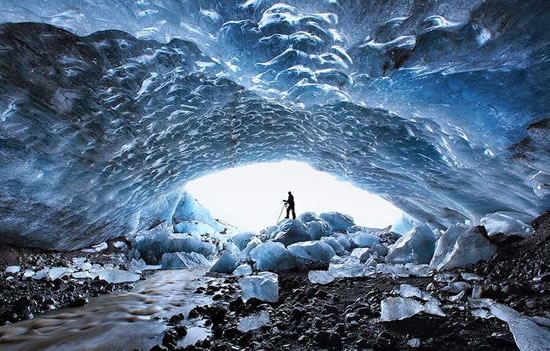Iceland, a land of fire and ice, offers an array of breathtaking natural phenomena that draw travelers from across the globe. One of the most popular routes to experience Iceland’s unique landscapes is the Golden Circle. This tourist trail leads you through some of the most spectacular and diverse scenery Iceland has to offer.
The Classic Golden Circle Tour: Iceland’s Þingvellir National Park
The Classic Golden Circle Tour Iceland, a journey through Þingvellir National Park, is an enriching experience that combines natural beauty with historical significance. This tour, which spans approximately seven and a half hours, takes visitors through Þingvellir National Park, a UNESCO World Heritage Site known as the birthplace of the world’s oldest existing parliament. Here, one can witness the dramatic separation of the American and Eurasian tectonic plates in a stunning rift valley.
The tour also includes visits to other Icelandic natural wonders like the Geysir Hot Springs, home to the famous Strokkur Geyser, which erupts with steaming hot water every few minutes. Another highlight is the magnificent Gullfoss Waterfall, where a powerful glacial river cascades down 32 meters in a thunderous roar.
Offered in ten different languages, the tour does not include lunch, but there are stops at Geysir and Gullfoss where food and drinks can be purchased.
The Geothermal Marvel: Geysir Geothermal Area
The Geysir Geothermal Area, a major highlight in Iceland’s famous Golden Circle tour, is celebrated for its stunning geothermal activity. The area is home to the Great Geysir (or Stori-Geysir), which has been largely dormant since 1916, apart from a brief activity in 1935. This iconic geyser, believed to have formed in the late 13th century following significant seismic activities, used to erupt every few hours, shooting jets of superheated water and steam up to 80 meters high. Its dormancy is partly attributed to foreign objects thrown into it by tourists, although this isn’t the sole reason for its inactivity.
Today, the main attraction is Strokkur, another geyser located nearby, known for its reliability in erupting every 10 minutes, with columns of boiling water reaching up to 30 meters. The Geysir Geothermal Area is a remarkable geothermal park featuring a variety of hot springs, sulfurous mud pots, steam vents, and unique flora, all sitting atop a vast underground boiling cauldron.
The Majestic Waterfall: Gullfoss
Gullfoss, also known as ‘Golden Falls’, is a majestic waterfall located in the Hvítá river canyon in Southwest Iceland. It’s a part of the renowned Golden Circle sightseeing route, which includes other attractions like the Geysir geothermal area and Þingvellir National Park. Gullfoss is a two-stage waterfall, with the first cascade dropping 11 meters and the second 21 meters, totaling a 32-meter drop. The surrounding canyon walls, formed by glacial outbursts, rise up to 70 meters.
The waterfall’s powerful flow varies seasonally: in summer, around 140 cubic meters of water per second cascade down, while in winter, it’s about 109 cubic meters.
Many vacation packages in Iceland include Gullfoss, offering visitors a chance to explore this natural wonder along with other activities like glacier tours and snowmobiling.
The Hidden Gem: Faxi Waterfall
Faxi Waterfall, also known as Fossin Faxi or Vatnsleysufoss, is a lesser-known but stunning attraction on Iceland’s Golden Circle route. This wide river waterfall, fed by the Tungufljot River which originates from glaciers and streams in the Icelandic highlands, presents a serene landscape. It measures 80 meters in width and 7 meters in height. Surrounded by flat farmlands, its presence is a pleasant surprise to visitors. The waterfall area, home to about 400 salmons annually, offers a variety of activities, including hiking, bird watching, and photography. There’s also a fish ladder adjacent to the waterfall, enhancing its scenic beauty. Visitors can enjoy local cuisine at the nearby Vid Faxa restaurant while taking in the views of this charming natural wonder.
The Relaxing Soak: Secret Lagoon at Flúðir
The Secret Lagoon, located near Flúðir along Iceland’s Golden Circle, is a man-made pool fed by geothermal hot springs, and it stands as the oldest pool in the country, built in 1891. Initially a local secret, it has become more popular recently, serving as an alternative to the Blue Lagoon. Situated 1.5 hours from Reykjavik, the Secret Lagoon offers an authentic experience with geothermal features around the pool, including a small geyser and hot pools. The water in the pool is continuously refreshed every 24 hours due to the flow from these features.
Visitors can enjoy a variety of amenities, including changing rooms, lockers, a cafe, and even rental options for towels and bathing suits. The lagoon’s setting includes a river, old stone changing buildings, and a boardwalk through geothermal features. While tickets can sell out, especially during busy months, the lagoon is managed to avoid overcrowding.
The Historic Site: Skálholt Cathedral
Skálholt Cathedral, an Icelandic historical landmark, has been a pivotal site for over a millennium. Established in 1056, Skálholt was the heart of ecclesiastical power in Iceland for 740 years. The first bishopric, founded by Ísleifur Gissurarson, marked the beginning of Skálholt’s prominence in Icelandic cultural, educational, and religious life. Ísleifur, son of Gissur hvíti, who built the first church at Skálholt, was succeeded by his son, Gissur, as bishop. Skálholt witnessed thirty-two Catholic bishops until the Reformation to Lutheranism in 1540, a transition marked by turmoil, including the execution of the last Catholic bishop, Jón Arason, and his sons in 1550.
In the post-Reformation era, Skálholt was governed by thirteen Lutheran bishops until 1796, when the bishopric moved to Reykjavík following an earthquake in 1784 that devastated all buildings except the cathedral. This period also saw the catastrophic Skaftáreldar fires eruption in 1783, leading to widespread loss of life and livestock.
The Volcanic Crater: Kerið Crater Lake
Kerið Crater Lake, located in the Grímsnes area in South Iceland and a part of the Golden Circle route, is a stunning volcanic crater lake known for its visually striking caldera. Unlike typical black volcanic rock, Kerið’s caldera is composed of red volcanic rock, making it a distinct geological feature. The caldera is about 55 meters deep, 170 meters wide, and 270 meters across. Notably, Kerið is approximately 6,500 years old, which is relatively young compared to surrounding volcanic features.
Initially, it was believed that Kerið was formed by a massive volcanic explosion. However, later studies suggested a different formation process. Kerið is thought to be a cone volcano that erupted, depleting its magma reserve. Following the eruption, the weight of the cone caused it to collapse into the now-empty magma chamber, forming the crater. The lake within the crater, which is 7-14 meters deep, gets its vivid aquamarine color from minerals in the soil and is at the same level as the water table, rather than being filled by rainfall.
The Greenhouse Village: Friðheimar Tomato Farm
Friðheimar Tomato Farm, situated about an hour and a half east of Reykjavik on the Golden Circle, is a renowned greenhouse complex and a must-visit destination. Owned by Helena Hermundardóttir, a passionate horticulturist, and Knútur Rafn Ármann, an agronomist, the farm has been perfecting its tomato cultivation since 1995. It’s a significant contributor to Iceland’s tomato supply, producing over 370 tons annually, accounting for about 40% of the nation’s crop.
The farm’s greenhouses use geothermal energy for heating and lighting, ensuring sustainable operations. They grow not just tomatoes, but also basil and cucumbers. A unique feature of their farming method is the use of biological pest control with “good flies” and the pollination of tomatoes by 1,200 bumble bees from the Netherlands.
Friðheimar offers a distinctive dining experience with its greenhouse restaurant, where guests can enjoy meals amidst the tomato plants.
The Mountainous Village: Hveragerði
Hveragerði, known as “the town of hot springs,” is a unique village located 45 kilometers east of Reykjavik, Iceland. This small town of about 3,000 residents is nestled in a valley rich in geothermal activity, with boiling water running just beneath the earth’s surface. This geothermal energy is harnessed to power the town’s well-lit greenhouses, which have been growing fruits and vegetables since the 1920s.
The surrounding area is part of the Hengill central volcano and is geothermally active, frequently experiencing minor earthquakes. Notable attractions in Hveragerði include the Reykjadalur Valley, where a three-hour hike leads to a geothermally heated river, offering a unique outdoor bathing experience amidst steaming vents and mud pools. The town also hosts the Hveragerði Geothermal Park, where visitors can witness geothermal wonders and engage in traditional activities like boiling an egg over a steaming vent or baking bread underground.
Conclusion: A Journey Through Fire and Ice
The Golden Circle tour in Iceland is more than just a sightseeing route; it’s a journey through the heart of Iceland’s extraordinary natural beauty. Each stop offers a unique glimpse into the diverse landscapes and rich history of this island nation. From the erupting geysers to the tranquil hot springs, the Golden Circle encapsulates the essence of Iceland. Whether you’re an avid nature lover, a history enthusiast, or simply seeking an unforgettable travel experience, the Golden Circle has something for everyone.
WATCH TOP VIDEOS FROM NIGERIAN TRIBUNE TV
- Let’s Talk About SELF-AWARENESS
- Is Your Confidence Mistaken for Pride? Let’s talk about it
- Is Etiquette About Perfection…Or Just Not Being Rude?
- Top Psychologist Reveal 3 Signs You’re Struggling With Imposter Syndrome
- Do You Pick Up Work-Related Calls at Midnight or Never? Let’s Talk About Boundaries






